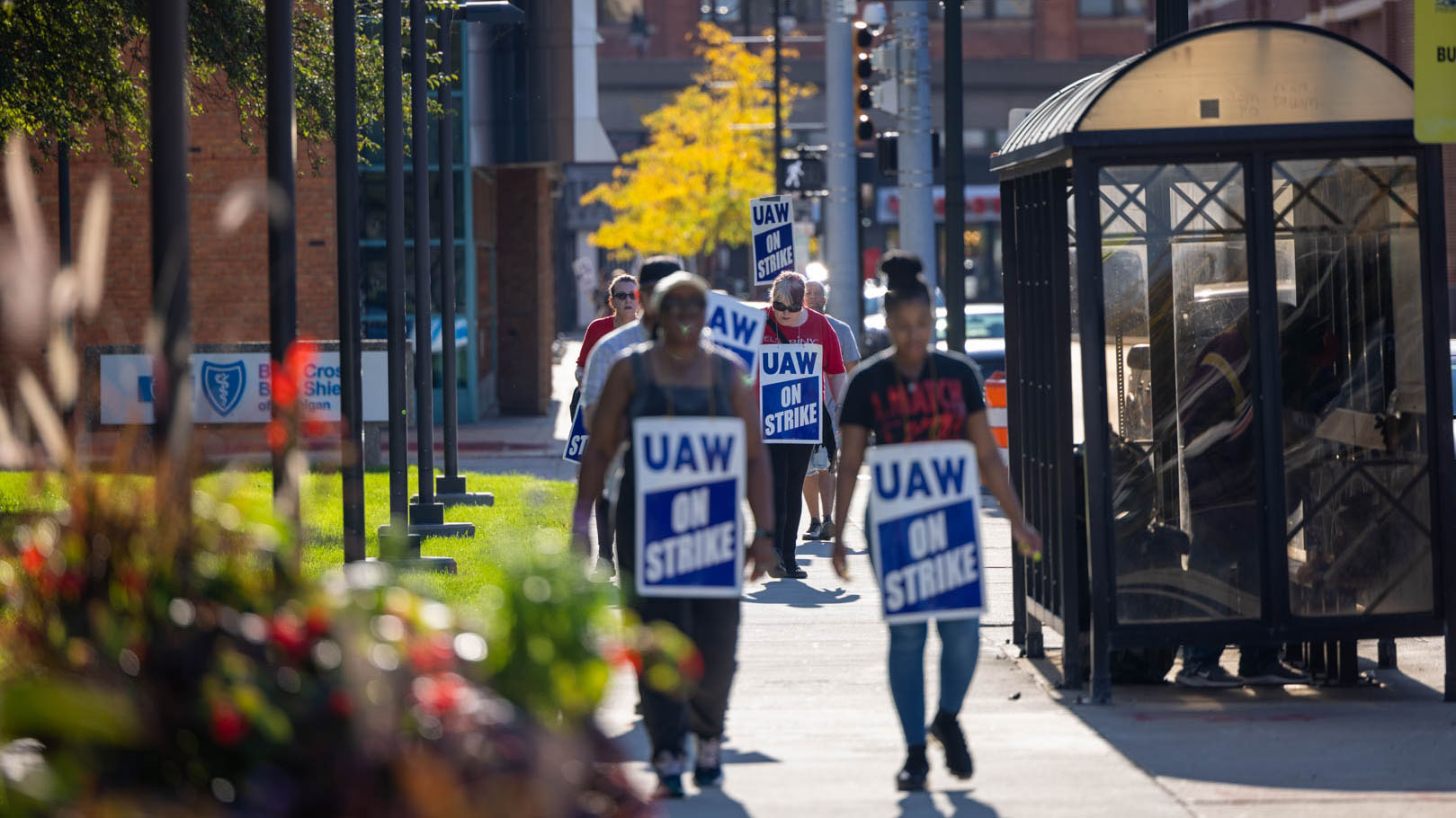Labor expert explains why union support remains high amid strikes
Support for the labor movement remains historically high in the U.S. with two-thirds of Americans in favor of unions, according to a recent Gallup poll.

UAW workers picket Blue Cross Blue Shield of Michigan on October 2, 2023 in Detroit
As Michigan’s “hot labor summer” transitions to a “fiery labor fall,” support for the labor movement remains historically high in the U.S. with two-thirds of Americans in favor of unions, according to a recent Gallup poll.
While the strike by the United Auto Workers union is the most obvious sign of a growing movement for laborers to collectively flex their muscles, there have been several other recent examples of unions pushing for better contracts across the state and beyond.
Earlier this year, the Teamsters were able to successfully negotiate a new contract for UPS workers. Starbucks and other coffee shop workers have been attempting to organize – often successfully – since the onset of the COVID-19 pandemic. In Michigan, casino workers in Detroit recently voted to authorize a strike as they seek a new contract, while over 1,000 UAW members with Blue Cross Blue Shield went on strike in mid-September.
Barry Eidlin, a labor expert and sociology professor at McGill University, attributes Americans’ growing support for the labor movement to a variety of factors. Namely, he says, an erosion of benefits and job security, stagnating pay, and increasing health care and living costs — all of which have been amplified by the COVID-19 pandemic.
Listen: Labor expert Barry Eidlin on why union support remains high amid strikes
“I think the sort of contradiction that people felt where these workers were being hailed as essential workers — heroes — but then being treated as disposable, really drove the point home,” said Eidlin. “Where this one group of workers basically had to put their lives on the line and go into work in order to keep a living while executives were able to work from home from their yacht.”
Additionally, he said, the tighter labor market that followed the pandemic gave workers a bit more bargaining power, allowing them to demand more without as much fear of losing their job.
The high visibility of these labor movements have played a role as well.
“As more workers have started going on strike — fighting back — that brings that option more into the conversation for more people,” Eidlin said. “It becomes something real in their minds.”
There is a generational component too, he says, with a lot of the organizing we’re seeing now being led by younger generations that are pushing back against the idea that they have to take whatever they can get at work, and just live with it.
“There have been people organized in the UAW; there were people in the rank and file fighting against concessions. There were Teamsters, who were pushing for a more militant approach, a more fighting approach, but they were always falling short, they wouldn’t actually be able to get power,” he said, adding that now, “you have these new slates taking power there that have brought those unions much more to the forefront of a more militant fighting approach.”

